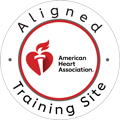Basic Life Support (BLS) assessment is an indispensable set of actions that can truly mean the difference between life and death in critical emergency situations. The ability to understand and master the 5 essential steps of BLS assessment is crucial for anyone who might find themselves in a position to provide immediate assistance to someone experiencing cardiac arrest or a life-threatening condition. In this comprehensive guide, we will take an in-depth look at these 5 pivotal steps and the profound significance they hold.
Picture yourself as the first responder to a cardiac arrest situation. Your prompt and knowledgeable actions could be the lifeline someone desperately needs. This article aims to equip you with the knowledge and understanding you need to confidently perform BLS assessment during emergencies, potentially saving a life.
Before we dive into the intricacies of the 5 steps of BLS assessment, it’s essential to have a solid grasp of the concept of Basic Life Support. BLS refers to a set of critical actions that are performed to stabilize and maintain an individual’s vital functions in emergency situations, particularly when they are in cardiac arrest. It’s a fundamental skill that can significantly elevate the chances of survival for someone in distress. BLS assessment serves as the initial evaluation of a person’s condition in an emergency. It provides first responders with invaluable insights into what actions to take, effectively setting the stage for further life-saving measures.
The 5 Steps of BLS Assessment
1. Recognition of Cardiac Arrest
The first step in BLS assessment is recognizing that a person is experiencing cardiac arrest. This involves a comprehensive assessment of the victim’s responsiveness, checking for normal breathing, and identifying the signs of cardiac arrest.
Be sure the area surrounding the victim is safe. If you get hurt, you can help someone else. If it’s not safe, make it safe. See if you can move the victim to a safe location. If you can’t do either of these do not approach the victim until trained professionals arrive.
2. Activating the Emergency Response System
Once cardiac arrest is recognized, the second step is to activate the emergency response system. This involves calling for professional assistance through the emergency hotline or initiating contact with the Emergency Medical Services (EMS).
3. Initiating Chest Compressions
The third step entails initiating chest compressions, a pivotal component of BLS assessment. High-quality chest compressions are essential for maintaining blood circulation. You need to push hard and fast. Push down at least 2 inches (about 1/3 the depth of the chest). Provide compressions at a rate of 100-120 per minute. The American Heart Association has a playlist of songs that are between 100-120 beats per minute that you can use to establish a proper rate:
Call Us Now
Get the Best CPR Class in Kansas City Today!
4. Providing Rescue Breaths
The fourth step is to provide rescue breaths in conjunction with chest compressions. These breaths ensure proper oxygenation for the victim. If you know the victim and feel comfortable performing mouth-to-mouth do so. If you have a barrier device, such as a pocket mask or face shield, you can use this to provide breaths. If you cannot safely provide breaths, just do compressions. When you provide breaths you should tilt the victim’s head lift the chin to open the airway, and provide just enough air to see their chest rise.
5. Using an Automated External Defibrillator (AED)
The fifth and final step involves the use of an Automated External Defibrillator (AED). The AED can restore a normal heart rhythm for patients experiencing certain types of cardiac arrest. AEDs are safe to use. Simply turn on the device and follow the prompts.
The Importance of Proper BLS Training
While knowing the 5 steps of BLS assessment is a significant step, undergoing formal BLS training is essential. We underscore the importance of BLS certification and the life-saving skills it imparts. BLS training ensures you are prepared to respond effectively and confidently during emergency situations. Consider enrolling in a BLS class at your local American Heart Association Training Center.
In conclusion, understanding the 5 steps of BLS assessment isn’t just a skill; it’s a potential life-changer. We reiterate the profound significance of being prepared and encourage our readers to seriously consider BLS training. By doing so, you can become a beacon of hope and make an immense difference in someone’s life during a critical moment.
Ready to Learn Lifesaving Skills?
CPR training empowers you to act quickly and confidently in an emergency. Our CPR Kansas City courses follow American Heart Association guidelines to prepare you to save a life.
Whether you need certification for work or want peace of mind, our CPR certification Kansas City classes make it easy. We offer flexible scheduling at our conveniently located training centers across Kansas City.
Contact CPR Kansas City to register for BLS, ACLS, PALS, or First Aid. Our experienced instructors provide hands-on practice to boost your skills and confidence. With small class sizes, you get personalized attention.


